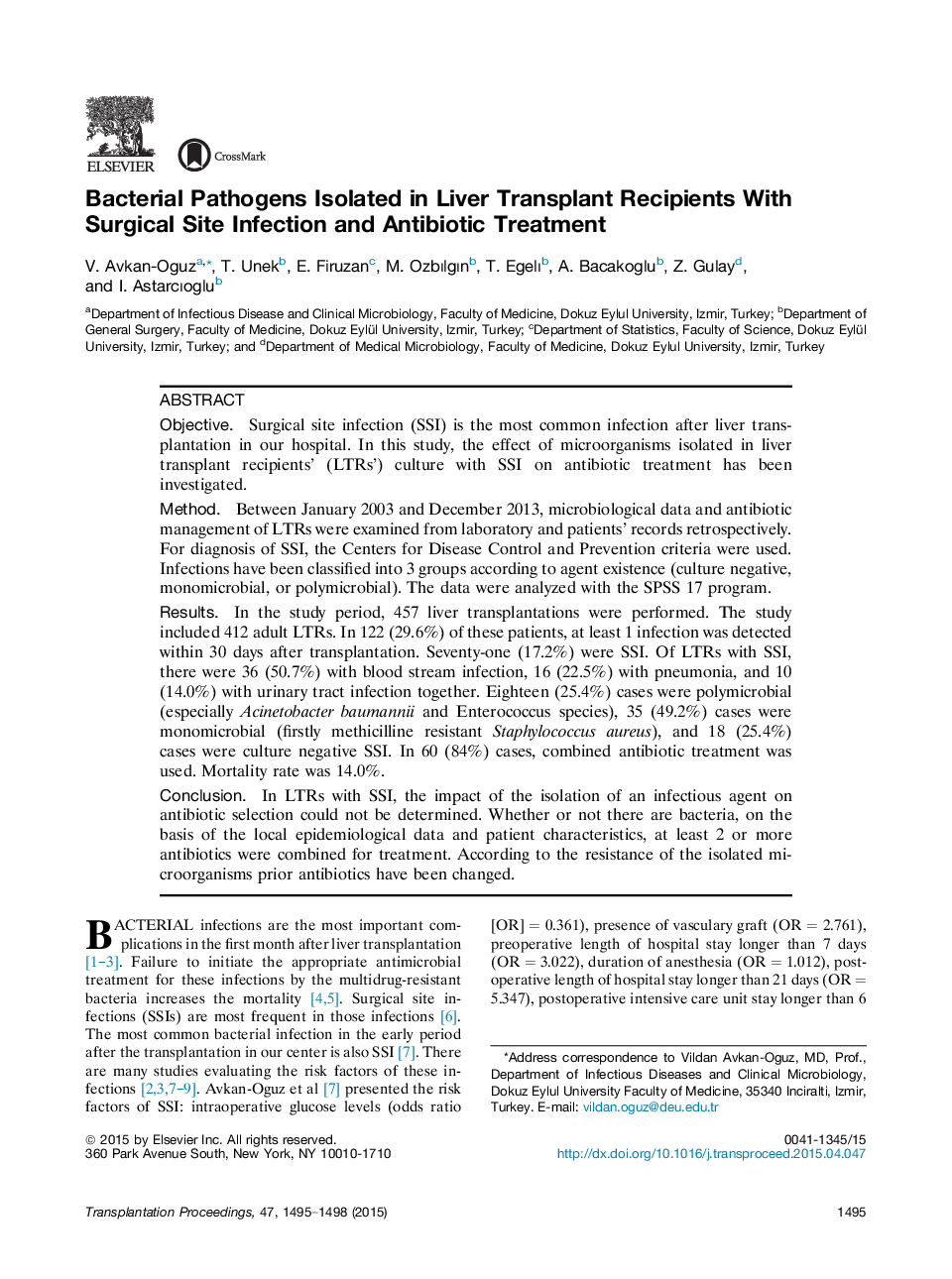| Article ID | Journal | Published Year | Pages | File Type |
|---|---|---|---|---|
| 4257412 | Transplantation Proceedings | 2015 | 4 Pages |
ObjectiveSurgical site infection (SSI) is the most common infection after liver transplantation in our hospital. In this study, the effect of microorganisms isolated in liver transplant recipients' (LTRs') culture with SSI on antibiotic treatment has been investigated.MethodBetween January 2003 and December 2013, microbiological data and antibiotic management of LTRs were examined from laboratory and patients' records retrospectively. For diagnosis of SSI, the Centers for Disease Control and Prevention criteria were used. Infections have been classified into 3 groups according to agent existence (culture negative, monomicrobial, or polymicrobial). The data were analyzed with the SPSS 17 program.ResultsIn the study period, 457 liver transplantations were performed. The study included 412 adult LTRs. In 122 (29.6%) of these patients, at least 1 infection was detected within 30 days after transplantation. Seventy-one (17.2%) were SSI. Of LTRs with SSI, there were 36 (50.7%) with blood stream infection, 16 (22.5%) with pneumonia, and 10 (14.0%) with urinary tract infection together. Eighteen (25.4%) cases were polymicrobial (especially Acinetobacter baumannii and Enterococcus species), 35 (49.2%) cases were monomicrobial (firstly methicilline resistant Staphylococcus aureus), and 18 (25.4%) cases were culture negative SSI. In 60 (84%) cases, combined antibiotic treatment was used. Mortality rate was 14.0%.ConclusionIn LTRs with SSI, the impact of the isolation of an infectious agent on antibiotic selection could not be determined. Whether or not there are bacteria, on the basis of the local epidemiological data and patient characteristics, at least 2 or more antibiotics were combined for treatment. According to the resistance of the isolated microorganisms prior antibiotics have been changed.
